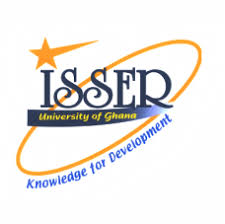Ghana’s balance of payments position recorded a strong improvement in 2024 compared to the previous year, according to the Institute of Statistical, Social and Economic Research (ISSER).
The significant turnaround, detailed in ISSER’s 2024 State of the Ghanaian Economy Report (SGER), was attributed to reduced external payments, lower capital outflows, and increased inflows from the International Monetary Fund’s (IMF) Extended Credit Facility (ECF) programme.
ISSER reported that the capital and financial account registered lower net outflows, driven mainly by a reduction in portfolio outflows and debt repayments. On the current account, merchandise exports rose sharply, supported by higher gold and crude oil earnings.
At the same time, imports also increased, particularly non-oil imports, alongside a marginal uptick in oil-related imports.
The reserve account strengthened considerably, rising to 4.0 months of import cover, surpassing the national target of 3.0 months. ISSER attributed this improvement to Ghana’s Gold-for-Reserves Programme and improved performance in both current and financial accounts.
Ghana’s trade balance improved markedly, recording a surplus of US$4.98 billion in 2024, up from US$2.65 billion in 2023.
The total value of merchandise exports surged by 21.4%, from US$16.66 billion in 2023 to US$20.22 billion in 2024. Meanwhile, imports rose by a moderate 8.8%, from US$14.01 billion to US$15.24 billion over the same period.
ISSER noted that the share of oil imports in total imports declined from 31.94% in 2023 to 29.04% in 2024, reflecting a gradual diversification of Ghana’s import structure.
While Ghana’s mineral exports soared, cocoa and timber exports continued to fall. Between 2020 and 2024, cocoa exports dropped by 16.5%, and timber exports declined by 10.2%. In contrast, mineral exports surged by an impressive 52.7%, underscoring the growing dominance of the extractive sector in Ghana’s export earnings.

